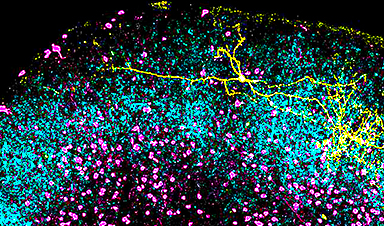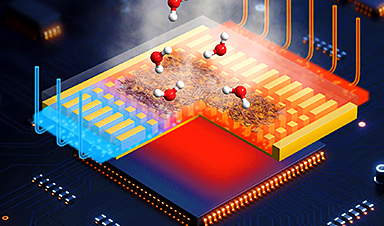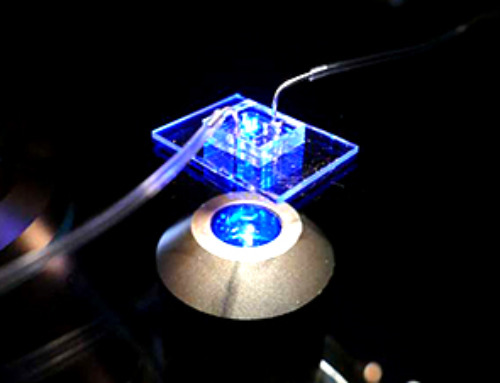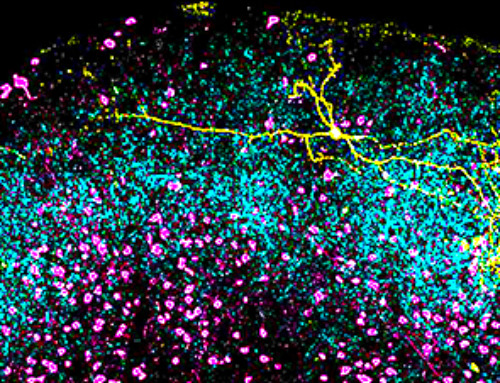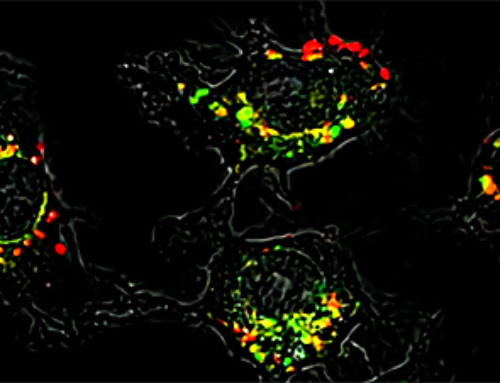A breakthrough study highlights Xenon gas as a potential game-changer in treating Alzheimer's disease, demonstrating its ability to mitigate brain damage and improve cognitive functions in mouse models. A forthcoming clinical trial aims to test its efficacy in humans.
Most current treatments for Alzheimer's disease focus on addressing amyloid plaques and tau tangles in the brain. However, researchers from Mass General Brigham and Washington University School of Medicine in St. Louis have identified a groundbreaking alternative: Xenon gas.
Their study demonstrated that inhaling Xenon gas reduced neuroinflammation, minimized brain atrophy, and promoted protective neuronal states in mouse models of Alzheimer's disease. These findings, published today (January 15) in Science Translational Medicine, have paved the way for a phase 1 clinical trial in healthy volunteers, set to begin in early 2025.
Groundbreaking Research and Clinical Trials
"It is a very novel discovery showing that simply inhaling an inert gas can have such a profound neuroprotective effect," said senior and co-corresponding author Oleg Butovsky, PhD, of the Ann Romney Center for Neurologic Diseases at Brigham and Women's Hospital (BWH), a founding member of the Mass General Brigham healthcare system. "One of the main limitations in the field of Alzheimer's disease research and treatment is that it is extremely difficult to design medications that can pass the blood-brain barrier—but Xenon gas does. We look forward to seeing this novel approach tested in humans."
"It is exciting that in both animal models that model different aspects of Alzheimer's disease, amyloid pathology in one model and tau pathology in another model, that Xenon had protective effects in both situations," said senior and co-corresponding author David M. Holtzman, MD, from Washington University School of Medicine in St. Louis.
The Science Behind Xenon's Effects
The exact causes of Alzheimer's disease remain unclear, and there is currently no cure. More effective treatments are urgently needed. Alzheimer's is marked by the buildup of proteins in the brain, such as tau and amyloid, which disrupt nerve cell communication. Over time, this leads to progressive brain damage, neuronal loss, and ultimately, death.
Microglia, the brain's primary immune cells, act as the brain's first line of defense, responding to any disruptions and playing a crucial role in maintaining brain function throughout life. However, when microglia become dysregulated, they contribute significantly to the progression of Alzheimer's disease. Research from Dr. Butovsky's lab has developed a method to study microglial responses to neurodegeneration, revealing that certain microglial phenotypes can be modulated to provide protective effects against Alzheimer's.
In this study, mouse models of Alzheimer's disease were treated with Xenon gas that has been used in human medicine as an anesthetic and as a neuroprotectant for treating brain injuries. Xenon gas penetrates the blood-brain barrier, passing from the bloodstream directly into the fluid surrounding the brain. The team found that Xenon gas inhalation reduced brain atrophy and neuroinflammation and improved nest-building behaviors in the Alzheimer's disease mouse models. It also induced and increased a protective microglial response that is associated with clearing amyloid and improving cognition. Together, these findings identify the promising potential of Xenon inhalation as a therapeutic approach that could modify microglial activity and reduce neurodegeneration in Alzheimer's disease.
Future Directions and Clinical Potential
The clinical trial at Brigham and Women's Hospital, which will initially only enroll healthy volunteers, is set to begin in the next few months.
As early phases of the clinical trial get underway to establish safety and dosage, the research team plans to continue to study the mechanisms by which Xenon gas achieves its effects in addition to its potential for treating other diseases such as multiple sclerosis, amyotrophic lateral sclerosis, and eye diseases that involve the loss of neurons. The team is also devising technologies to help use Xenon gas more efficiently as well as potentially recycle it.
"If the clinical trial goes well, the opportunities for the use of Xenon gas are great," said co-author Howard Weiner, MD, co-director of the Ann Romney Center for Neurologic Diseases at BWH and principal investigator of the upcoming clinical trial. "It could open the door to new treatments for helping patients with neurologic diseases."
Reference: "Inhaled xenon modulates microglia and ameliorates disease in mouse models of amyloidosis and tauopathy" by Wesley Brandao, Nimansha Jain, Zhuoran Yin, Kilian L. Kleemann, Madison Carpenter, Xin Bao, Javier R. Serrano, Eric Tycksen, Ana Durao, Jen-Li Barry, Caroline Baufeld, Dilansu Guneykaya, Xiaoming Zhang, Alexandra Litvinchuk, Hong Jiang, Neta Rosenzweig, Kristen M. Pitts, Michael Aronchik, Taha Yahya, Tian Cao, Marcelo Kenzo Takahashi, Rajesh Krishnan, Hayk Davtyan, Jason D. Ulrich, Mathew Blurton-Jones, Ilya Ilin, Howard L. Weiner, David M. Holtzman and Oleg Butovsky, 15 January 2025, Science Translational Medicine.
DOI: 10.1126/scitranslmed.adk3690
Authorship: In addition to Butovsky and Weiner, Mass General Brigham authors include Wesley Brandao, Zhuoran Yin, Kilian L. Kleemann, Madison Carpenter, Ana Durao, Jen-Li Barry, Caroline Baufeld, Dilansu Guneykaya, Xiaoming Zhang, Neta Rosenzweig, Kristen M. Pitts, Michael Aronchik, Taha Yahya, Tian Cao, Marcelo Kenzo Takahashi, Rajesh Krishnan, Additional authors include Nimansha Jain, Xin Bao, Javier R. Serrano, Eric Tycksen, Alexandra Litvinchuk, Hong Jiang, Hayk Davtyan, Jason D. Ulrich, Mathew Blurton-Jones, Ilya Ilin, and David M. Holtzman.
Disclosures: Butovsky, Ilin, Weiner, Yin, and Brandao are co-inventors on patent no. 17/914,061 (held by Brigham and Women's Hospital and General Biophysics) for using Xe to treat neurodegenerative diseases. Butovsky is co-founder and is on the scientific advisory board of Glial Therapeutics and GliaX; collaborates with GSK and Regulus Therapeutics; has research funding from Sanofi, GSK; and consults for/has received honoraria from UCB, Camp4, Ono Pharma USA, General Biophysics. Holtzman co-founded and is on the scientific advisory board of C2N Diagnostics. Holtzman is on the scientific advisory board of Denali, Genentech, and Cajal Neurosciences and consults for Asteroid Therapeutics. Blurton-Jones co-founded and is on the scientific advisory board of NovoGlia Inc. Ilin is the founder and CEO of General Biophysics LLC.
Funding: This study was funded by National Institutes of Health (NIH) (STTR R41AG073059, R01 AG051812 R01 AG054672, R01 NS088137 R01 AG075509, RF1 NS090934, P30 AG066519, U19 AG06970101); Cure Alzheimer Fund; Massachusetts Center for Alzheimer Therapeutic Science (MassCATS); BrightFocus Foundation 2020A016806; Alzheimer's Association research fellowship AARF-21-846786; National Multiple
Sclerosis Society FG-2108-38372; Department of Defense W81XWH-22-1-0945
News
Lipid nanoparticles discovered that can deliver mRNA directly into heart muscle cells
Cardiovascular disease continues to be the leading cause of death worldwide. But advances in heart-failure therapeutics have stalled, largely due to the difficulty of delivering treatments at the cellular level. Now, a UC Berkeley-led [...]
The basic mechanisms of visual attention emerged over 500 million years ago, study suggests
The brain does not need its sophisticated cortex to interpret the visual world. A new study published in PLOS Biology demonstrates that a much older structure, the superior colliculus, contains the necessary circuitry to perform the [...]
AI Is Overheating. This New Technology Could Be the Fix
Engineers have developed a passive evaporative cooling membrane that dramatically improves heat removal for electronics and data centers Engineers at the University of California San Diego have created an innovative cooling system designed to greatly enhance [...]
New nanomedicine wipes out leukemia in animal study
In a promising advance for cancer treatment, Northwestern University scientists have re-engineered the molecular structure of a common chemotherapy drug, making it dramatically more soluble and effective and less toxic. In the new study, [...]
Mystery Solved: Scientists Find Cause for Unexplained, Deadly Diseases
A study reveals that a protein called RPA is essential for maintaining chromosome stability by stimulating telomerase. New findings from the University of Wisconsin-Madison suggest that problems with a key protein that helps preserve chromosome stability [...]
Nanotech Blocks Infection and Speed Up Chronic Wound Recovery
A new nanotech-based formulation using quercetin and omega-3 fatty acids shows promise in halting bacterial biofilms and boosting skin cell repair. Scientists have developed a nanotechnology-based treatment to fight bacterial biofilms in wound infections. The [...]
Researchers propose five key questions for effective adoption of AI in clinical practice
While Artificial Intelligence (AI) can be a powerful tool that physicians can use to help diagnose their patients and has great potential to improve accuracy, efficiency and patient safety, it has its drawbacks. It [...]
Advancements and clinical translation of intelligent nanodrugs for breast cancer treatment
A comprehensive review in "Biofunct. Mater." meticulously details the most recent advancements and clinical translation of intelligent nanodrugs for breast cancer treatment. This paper presents an exhaustive overview of subtype-specific nanostrategies, the clinical benefits [...]
It’s Not “All in Your Head”: Scientists Develop Revolutionary Blood Test for Chronic Fatigue Syndrome
A 96% accurate blood test for ME/CFS could transform diagnosis and pave the way for future long COVID detection. Researchers from the University of East Anglia and Oxford Biodynamics have created a highly accurate [...]
How Far Can the Body Go? Scientists Find the Ultimate Limit of Human Endurance
Even the most elite endurance athletes can’t outrun biology. A new study finds that humans hit a metabolic ceiling at about 2.5 times their resting energy burn. When ultra-runners take on races that last [...]
World’s Rivers “Overdosing” on Human Antibiotics, Study Finds
Researchers estimate that approximately 8,500 tons of antibiotics enter river systems each year after passing through the human body and wastewater treatment processes. Rivers spanning millions of kilometers across the globe are contaminated with [...]
Yale Scientists Solve a Century-Old Brain Wave Mystery
Yale scientists traced gamma brain waves to thalamus-cortex interactions. The discovery could reveal how brain rhythms shape perception and disease. For more than a century, scientists have observed rhythmic waves of synchronized neuronal activity [...]
Can introducing peanuts early prevent allergies? Real-world data confirms it helps
New evidence from a large U.S. primary care network shows that early peanut introduction, endorsed in 2015 and 2017 guidelines, was followed by a marked decline in clinician-diagnosed peanut and overall food allergies among [...]
Nanoparticle blueprints reveal path to smarter medicines
Lipid nanoparticles (LNPs) are the delivery vehicles of modern medicine, carrying cancer drugs, gene therapies and vaccines into cells. Until recently, many scientists assumed that all LNPs followed more or less the same blueprint, [...]
How nanomedicine and AI are teaming up to tackle neurodegenerative diseases
When I first realized the scale of the challenge posed by neurodegenerative diseases, such as Alzheimer's, Parkinson's disease and amyotrophic lateral sclerosis (ALS), I felt simultaneously humbled and motivated. These disorders are not caused [...]
Self-Organizing Light Could Transform Computing and Communications
USC engineers have demonstrated a new kind of optical device that lets light organize its own route using the principles of thermodynamics. Instead of relying on switches or digital control, the light finds its own [...]


